With millions of users worldwide and growing revenue, the online dating market offers a golden opportunity for entrepreneurs. Despite the rise of dating apps, websites still hold strong, particularly among users aged 30-50 who prefer the depth and familiarity they provide. If you're thinking of building a dating website, you're tapping into a market with massive potential.
However, building a successful platform takes more than just a good idea. From understanding market dynamics to navigating challenges and selecting the right features, there’s a lot to consider.
In this article, we'll guide you through every step of the process, and with our development team's expertise, we can help bring your vision to life.
Overview of the online dating market
The online dating market is booming, and despite the growing popularity of apps, dating websites continue to maintain their strong position.
Based on Statista data, the market is expected to reach $3.56 billion with 470 million users and a 5.8% user penetration rate by 2029. The United States is a major contributor, projected to generate $1.39 billion in 2024, with a user penetration rate of 17.7%, thanks to its large, tech-savvy population and successful homegrown platforms like Tinder and Bumble.
A report from Grand View Research shows that while dating apps are becoming more popular (82% of revenue share in 2022), dating websites are still holding their ground with projected growth at a CAGR of 6.2% by 2030. Another report shows that users over 50 are more likely to use a web platform instead of an app (50% vs 11%). This shows that traditional dating websites are still a reliable and steady choice for many people.
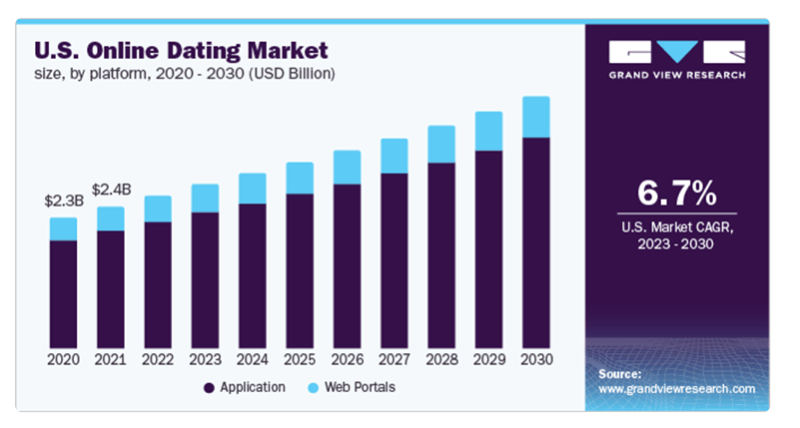
Factors driving this growth include:
- Rising loneliness: An increasing number of people are seeking online connections due to growing feelings of isolation.
- Aggressive marketing: The emergence of new dating apps with strong marketing strategies has attracted a wider user base.
- Improved user experience: Due to constant innovation apps are becoming more fun and convenient to use.
- Impact of the Covid-19 pandemic: Online dating became a safer, more convenient alternative for meeting new people during lockdowns and social distancing periods.
The increasing user base and revenue highlight the market's potential, but also its growing competition. To stand out, new platforms must focus on what makes top dating websites successful—engaging features, strong user experience, and effective marketing. Differentiation and unique value propositions will be crucial in this crowded landscape.
Top dating websites and why they are successful
Successful dating sites have mastered different aspects of user engagement and matching. Based on the Forbes list websites like Plenty of Fish, Match, OkCupid, eHarmony, and Zoosk are the best in the industry. Let’s learn why:

- Plenty of Fish is known for its additional features, offering more ways for users to interact and connect.
- Match stands out as a well-established platform with a broad user base.
- OkCupid excels with its comprehensive matching algorithm, ensuring that users find compatible matches.
- eHarmony offers one of the best free feature sets, attracting users who may not be ready to commit financially.
- Zoosk uses behavior matching to create a more tailored experience for its users.
Let’s compare these platforms:
|
Website / Criteria |
Plenty of Fish | Match | OkCupid | eHarmony | Zoosk |
| Number of users | 150 million+ | 39 million | 70 million | 29 million | 40 million |
| Revenue per year | $18.7 million | $210.3 million | $27.9 million | $47.2 million | $9.1 million |
| Distinctive features | Free to use with optional premium features, casual dating focus | Strong focus on serious relationships, extensive user base | Comprehensive matching algorithm, detailed profiles | Focus on long-term relationships, known for its in-depth compatibility questionnaire | Behavioral matchmaking, fun user interface |
These platforms succeed because they have identified and leveraged unique value propositions, from extensive matching algorithms to specialized features that cater to specific user needs. So if you think “How to start a dating site?”, think about what unique experience you can offer first.
Challenges of dating websites
Creating a successful dating site means navigating several critical challenges that can determine its success or failure. Effectively addressing these obstacles can turn potential issues into key advantages that set your platform apart. Below are some of the most common challenges and potential solutions:

1. Users attract users
One of the biggest hurdles for any new dating website is building a user base. Dating platforms thrive on interaction, and without a substantial number of users, new members may lose interest quickly. This creates a classic "chicken and egg" problem—users want to join a site with lots of potential matches, but it's hard to attract those users without already having a large, active community.
Early in its development, Tinder faced this challenge. The founders solved it by focusing on college campuses, where they could build small, tight-knit communities that rapidly expanded through word-of-mouth. They hosted parties where attendees could only enter if they downloaded the app, thereby creating a critical mass of users in a concentrated area.
Instead of using fake profiles, which can undermine trust, focus on niche markets or specific demographics. For instance, FarmersOnly successfully targeted rural singles, offering a community where like-minded individuals could connect. This approach helps attract users who are more likely to engage with the platform, as they see it as tailored to their specific needs.
2. Churn
Churn is a significant issue for dating websites. Positive churn occurs when users leave the platform after successfully finding a match, while negative churn happens when users leave because they are dissatisfied or don't find value. Dating sites need to constantly bring in new users to replace those who leave after finding a match. This need for fresh users is higher than on many other platforms to keep the site lively and give users plenty of potential matches.
Match.com addresses churn by continuously offering new features and services that encourage users to stay engaged even after they've found a match. For example, they provide relationship advice, events, and activities for couples, helping to keep users on the platform longer.
Create a sense of community that goes beyond just matching. Hinge does this by positioning itself as "the app designed to be deleted." They focus on serious relationships and use unique prompts and conversation starters that keep users engaged in meaningful ways. Additionally, offering post-match content like relationship tips, events, or even a "second chances" feature can help retain users.
3. Poor behavior
Online dating can sometimes bring out poor behavior, particularly in the form of harassment or inappropriate interactions. This issue is especially concerning for women, who may feel unsafe or uncomfortable on platforms where these behaviors are not adequately managed. Bumble tackled this problem head-on by empowering women to make the first move. By allowing only women to initiate conversations, Bumble created a safer and more controlled environment. This approach not only addressed the issue of poor behavior but also differentiated Bumble in the crowded dating app market.
Implement strong community guidelines and proactive moderation to maintain a respectful and safe environment. OkCupid uses detailed profiles and question-based matching to filter out incompatible users, reducing the chances of poor behavior. Additionally, incorporating features like report and block options, real-time chat moderation, and photo verification can help maintain a positive user experience.
4. Security
Security is paramount in online dating, where users are sharing personal information and potentially meeting strangers in real life. Data breaches, identity theft, and fraud can severely damage a platform's reputation and deter users from joining.
The infamous "Tinder Swindler" case highlighted the dangers of online dating fraud. This documentary brought to light how a scammer used Tinder to defraud women of hundreds of thousands of dollars. The fallout from this case underscored the need for better security measures across dating platforms.
Prioritize security from the outset by implementing robust measures such as data encryption, multi-factor authentication, and regular security audits. Grindr, for example, faced significant security challenges in its early days but has since improved its protocols, including implementing stricter identity verification processes and offering privacy features like discreet app icons. Ensuring that your platform is secure not only protects your users but also builds trust in your brand.
5. Huge competition
The online dating space is crowded, with countless apps and websites vying for users' attention. To succeed, a new platform must offer something unique that differentiates it from established players.
eHarmony differentiated itself with its scientific approach to matchmaking, using a comprehensive personality test to pair users with compatible partners. This focus on long-term relationships rather than casual dating helped eHarmony carve out a distinct niche in the market.
Focus on a unique selling proposition (USP) that sets your platform apart. Whether it's a specific demographic, like JDate for Jewish singles, or a unique feature, like Coffee Meets Bagel’s daily curated matches, differentiation is key. Consider what gap exists in the market or what pain points current users face, and build your platform around solving those issues.
Monetization
The question is not only “How to start a dating service?” but also how to make it profitable. There are a few strategies to monetize such a platform:
- Subscription: Users pay for premium features like unlimited messaging, ad-free browsing, and enhanced profiles. For example, Tinder Plus and Bumble Boost offer premium subscriptions with advanced features.
- Advertisements: Free users are shown ads while browsing the platform. Many dating apps like Plenty of Fish and OkCupid generate revenue through this method while offering free access to basic features.
- In-app purchases: Users can buy additional features or boosts, such as more profile visibility or extra swipes. Tinder allows users to purchase "Super Likes" and Badoo sells profile boosts. Zoosk allows users to send virtual flowers and gifts to their matches.
- Affiliate marketing: Platforms partner with other services, offering users related products or experiences (like event tickets or travel deals). Match.com sometimes offers such partnerships to its users.
Nevertheless, monetization in dating websites is primarily driven by subscriptions and advertisements, with subscriptions accounting for over 63% of revenue in 2022, according to a report by Grand View Research. Many platforms offer free basic features but charge for premium access, which includes benefits like unlimited likes, no ads, and enhanced visibility options such as read receipts. Subscription fees vary across platforms, making this model the dominant method of monetization as users increasingly adopt premium services to access the full range of features.
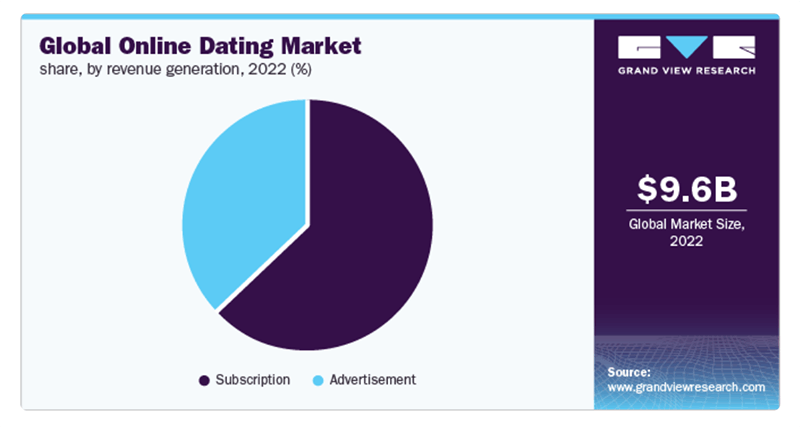
Top features of a dating website
When building a dating website, it's important to include features that enhance user experience and security. Based on industry standards, here are the top features your platform should have:

- Matching: These are vital for helping users find the right matches among users. The more comprehensive and accurate the algorithm, the better the user experience, as seen with platforms like eHarmony. Some websites, like eHarmony, rely on a detailed personality quiz to match users based on compatibility, while others use behavioral patterns like Zoosk, or location like Bumble or Tinder.
- Communication: Offering various ways for users to interact, such as messaging, video calls, and group chats, increases engagement. The more communication tools available, the more comfortable and connected users feel.
- Safety: Features like photo verification, blocking, and reporting are essential for creating a safe environment. Platforms like Bumble have successfully implemented these to enhance user trust.
- Mobile: A responsive and feature-rich mobile app is crucial in today’s mobile-first world, ensuring that users can engage with your platform anytime, anywhere.
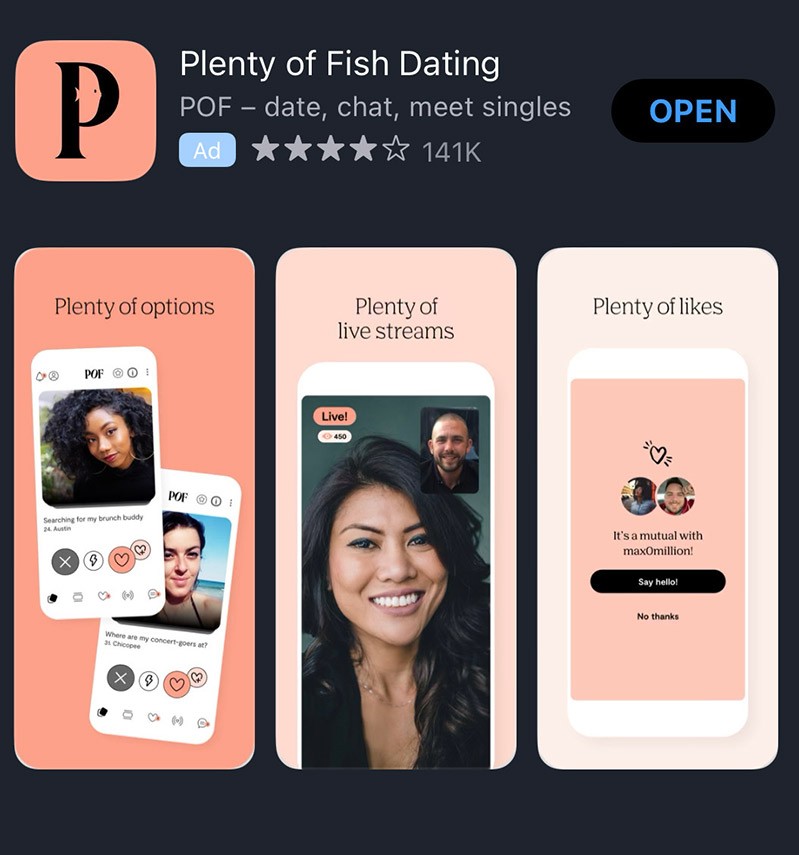
- Monetization: Offering both free and premium memberships provides flexibility for users while generating revenue. This approach is effectively utilized by platforms like Match.com.
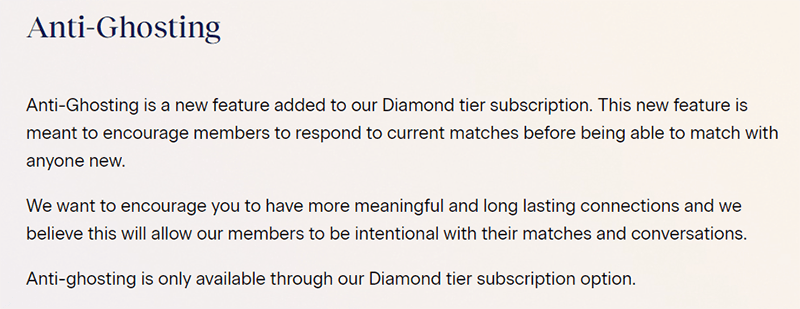
Advanced features
To stand out in the competitive online dating market, consider incorporating advanced features that can provide a unique experience for your users. Here are a few possibilities:
- AI features: Use artificial intelligence to analyze user behavior and preferences, offering even more personalized match suggestions. eHarmony and OkCupid use AI to refine their matching algorithms. Moreover, giants like Tinder and Hinge integrate AI functionality to improve user experience: from creating profiles to generating icebreakers.
- Gamification: Introduce game-like elements such as quizzes, challenges, or rewards that make the process of finding a match more engaging. Coffee Meets Bagel uses a points system to encourage user interaction.
- Augmented reality: Incorporate AR features that allow users to go on virtual dates or explore locations together in a virtual environment, enhancing the connection before an in-person meeting.
- Voice messages and voice calls: Allow users to send voice messages or make voice calls within the app, offering a more personal way to communicate, which is less intimidating than video for some users.
- Event integration: Host virtual or in-person events where users can meet and interact, creating a sense of community and increasing engagement. Meetup.com integrates this with dating events, helping users connect in group settings.
Wonder how to start an online dating site?
Contact UsHow to build a dating website
Creating a dating website involves several steps, each critical to the platform's success:
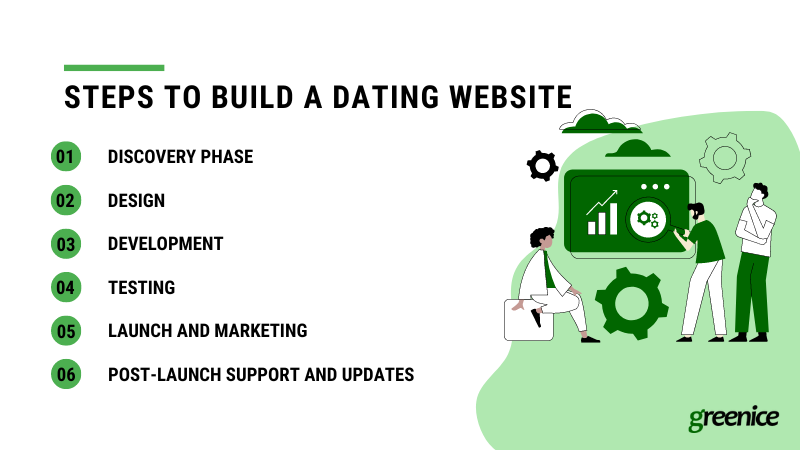
1. Discovery phase
The discovery phase is where the foundation of your dating website is established. This step also includes marketing aspects like defining your platform's value proposition and unique selling points (USP). Your team will work closely with you to determine what makes your platform different from existing ones. This could be a specific feature, a unique matching algorithm, or a niche market that hasn’t been fully tapped yet.
Key considerations:
- Value proposition: What will make users choose your platform over others? This could be a superior matching algorithm, a focus on a particular community, or exclusive features.
- USP: Identify the elements that set your platform apart. For instance, will you offer advanced security features, or will your platform be the most user-friendly in your niche?
- Niche selection: Your development team will help you identify and target a niche that aligns with your goals, whether it’s a demographic group, a shared interest, or a specific dating style.
After working through these considerations, the outcome is a Software Requirements Specification (SRS) document. This crucial document outlines all the technical and functional requirements of your platform, ensuring that every team member is aligned on the project’s goals and expectations. The SRS serves as a blueprint that guides the design and development process, minimizing misunderstandings and ensuring that the project stays on track.
2. Dating website design
Design is where your platform's look and feel come to life. This step is critical, as the design will heavily influence user experience and engagement. Your team will focus on creating a visually appealing and intuitive interface that is easy to navigate. However, keep in mind that more advanced features and customization options will require more time and resources to design.
Key considerations:
- User Interface (UI): Your team will design a clean and visually appealing interface that reflects your brand and is easy for users to navigate.
- User Experience (UX): The goal is to create a seamless experience that encourages users to spend more time on the platform. This includes everything from how users move through the site to how easy it is for them to find matches.
3. Development
Once the design is approved, the development phase begins. This is where your platform is built from the ground up. Your development team will code the platform, integrating all the features and functionalities that were planned in the discovery phase. This step also involves ensuring that the platform is scalable, meaning it can handle a growing number of users without performance issues.
Key considerations:
- Coding and integration: Your team will develop the core functionalities of your platform, including user registration, profile creation, messaging systems, and matching algorithms.
- Scalability: The platform will be built to accommodate growth, ensuring that it can handle increased traffic and data without compromising performance.
- Security: Your team will implement robust security measures to protect user data and ensure the platform is secure from threats like hacking and fraud.
4. Testing
Testing is a crucial step that ensures your dating website is free of bugs and ready for users. This phase involves thorough testing of the platform to identify and fix any issues that could affect user experience or security.
Key considerations:
- Bugs: Your team will rigorously test the platform to identify any bugs or glitches. This includes checking the functionality of all features and ensuring the platform runs smoothly across different devices and browsers.
- Security: Testing for vulnerabilities is essential to prevent data breaches and protect user information.
- User experience: Beta testing with a small group of users can provide valuable feedback on the platform’s usability. This allows your team to make any necessary adjustments before the official launch.
5. Launch and Marketing
Once your dating website is fully developed and tested, it’s time to launch. However, a successful launch requires more than just going live—it involves a well-planned marketing strategy to attract users to your platform.
Key considerations:
- Marketing strategy: You will need to develop a marketing plan that may include social media campaigns, influencer partnerships, and targeted ads to build awareness and drive traffic to your site.
- Partnerships: Collaborating with influencers or other brands can help you reach a larger audience and add credibility to your platform.
- User acquisition: Initial user acquisition is crucial for the success of your platform. Consider offering promotions or early access incentives to attract your first wave of users.
6. Post-launch support and updates
After launch, ongoing support and updates are necessary to keep your platform running smoothly and meeting user expectations. This involves monitoring the platform for any issues, making necessary updates, and continually improving the user experience based on feedback.
Key considerations:
- Technical support: Your development team will provide ongoing support to resolve any technical issues that arise post-launch.
- Feature updates: As user needs evolve, your platform will need to adapt. Regular updates and new features will keep your platform competitive and engaging.
- User feedback: Listening to user feedback is essential for continuous improvement. Your team will use this feedback to refine features and enhance the overall user experience.
How much does it cost to start a dating website?
The cost of building a dating site can vary significantly depending on the approach you take:
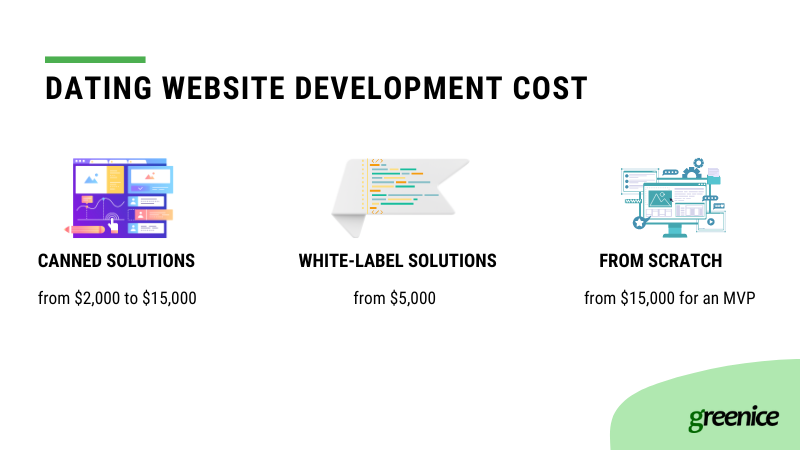
Canned solutions
Ready-made solutions offer the most budget-friendly option, with lower upfront costs and quicker setup. This includes using CMSs like WordPress or website builders like Wix. These platforms are user-friendly and don’t require much technical expertise, making them ideal for small businesses or startups with limited budgets.
However, these platforms offer limited flexibility in terms of customization, meaning you might not be able to add advanced features or tailor the site to unique needs. As your user base grows, ready-made solutions may struggle to handle increased traffic, which could lead to performance issues. They also might lack advanced security features, making your platform more vulnerable to cyber threats.
The price ranges from $2,000 to $15,000.
White-label solutions
White-label solutions offer a pre-built core that can be customized, allowing you to launch your dating website relatively quickly. While more customizable than CMS platforms, white-label solutions offer some ability to tweak features and design to fit your brand or market niche better.
Unlike website builders, white-label solutions usually require some coding knowledge or technical expertise for customization and maintenance. Because the core platform is pre-written, many dating websites using white-label solutions end up looking and functioning similarly, limiting your ability to stand out in a competitive market.
The price starts from $5,000.
From scratch
This option gives you full control over every aspect of your platform, from design to functionality. You can build unique features that cater specifically to your audience. A custom-built site is designed with scalability in mind, ensuring your platform can grow and handle increased traffic smoothly. They allow the integration of advanced security features, protecting your user base from data breaches and fraud.
However, building a dating website from scratch is the most expensive option, as it includes costs for design, development, testing, and marketing. Custom websites take significantly more time to develop compared to ready solutions, delaying your time to market. It also requires an experienced development team, which adds to the complexity and cost of the project.
The price starts from $15,000 for an MVP.
Choosing the right approach depends on your budget, technical capabilities, and how unique or feature-rich you want your dating platform to be. Ready-made solutions are affordable and quick, white-label options provide a balance between speed and flexibility, while custom development offers full control and scalability at a higher cost.
Searching for dating website developers?
Contact UsConclusion
Building your own dating website is not just an exciting venture; it’s a chance to tap into a rapidly growing market with the potential for significant financial and user engagement rewards. However, success in this competitive space depends on more than just a good idea. Understanding the market landscape, addressing common challenges like user retention and security, and integrating key features that enhance user experience are essential to building a platform that stands out.
Whether you’re aiming for a fully customized solution or a cost-effective white-label option, our experienced development team will guide you from concept to completion. With the right strategy and support, we can help you turn your vision into the next major player in the online dating world.
Let's work together to bring your dating website to life and create something truly unique in this thriving industry.
Rate this article!
5




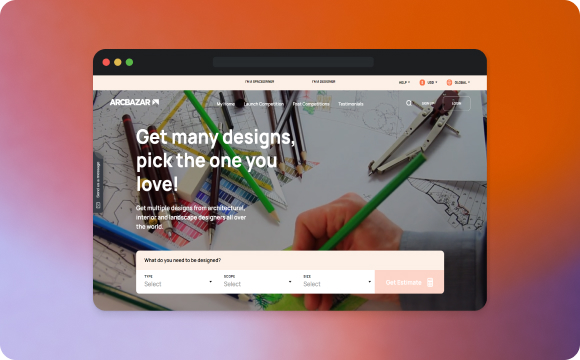
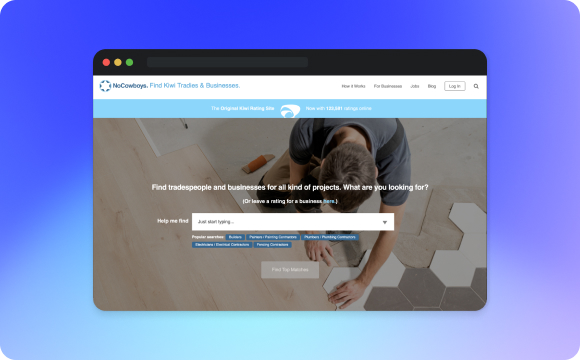



 Sign in with Google
Sign in with Google
Comments (0)